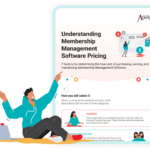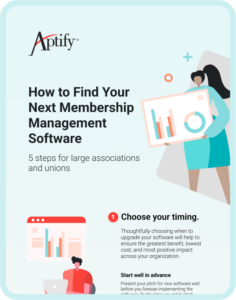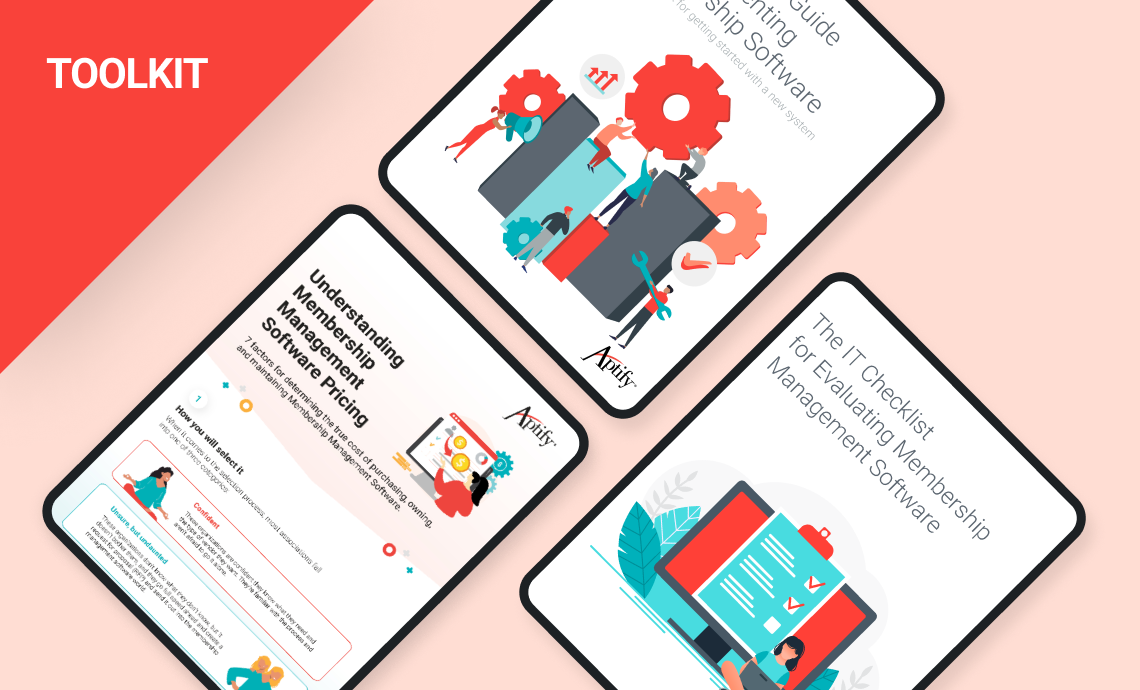You might know it’s time for new membership management software for your organization, but your leadership team and board of directors might have concerns about making the investment.
Here are six common objections to purchasing new technology and how to move beyond them.
When you’re trying to make the case for new membership management software, preparation is key to success. Even if you’ve shared your organization’s goals and challenges and presented a strong business case for new technology, chances are that your executive team and board of directors will have concerns. And if you aren’t prepared to address them, your project won’t move forward.
In truth, the objections are likely due to concerns about risks to the organization. It’s important to listen to the objections and show that you take them seriously. At the same time, you must overcome the objections with compelling arguments.
Here are six common objections to purchasing new membership management software and how to move past them:
1. “We don’t have the budget for this.”
Budget (or lack thereof) is one of the biggest pushbacks for change. An effective way to overcome this objection is to reframe it as an investment versus and expense.
Of course, there will be an upfront investment of time, money, and resources in moving to a new system. However, it’s important to consider the costs and opportunities involved in not moving to a new system. For example:
- How much will it cost if a percentage of your membership base leaves due to a poor member experience? The right membership software can help you provide a modern, convenient member experience.
- How many employee hours does your organization waste every week due to inefficiencies? Modern membership software can help you streamline and automate manual processes so your staff can focus on higher value work.
- Are you juggling multiple systems, such as marketing, event management, and accounting? Moving to a single, comprehensive platform can save time and hassle while helping your organization to work more effectively.
- How much potential revenue is your organization missing out on because you don’t have the visibility into data needed to find new opportunities? The right membership software can give you insights that help you uncover opportunities for growth and make more informed business decisions.

Before the question of cost comes up, make sure you understand the factors that go into the costs of owning and maintaining membership management software. To learn more, check out the infographic Understanding Membership Management Software Pricing.
2. “We just upgraded our membership management software a few years ago.”
This is an understandable concern. Nobody likes doing a large-scale software implementation or upgrade every few years. It can be expensive, there’s a significant effort that goes into project management, and you must re-train your employees.
But the age of the system (or however long it’s been since you last upgraded it) has little to do with the value of the system. If your membership management software doesn’t meet your organization’s and members’ needs, if it creates inefficiency in the office, and if it adds technology consulting costs when it breaks, then it doesn’t matter if you upgraded the system only a few months ago. You still need a solution that works.
Keep in mind that this objection is typically more politically motivated than results-motivated. Somebody, somewhere might feel like they’ve failed because the current software isn’t doing its job. It’s not an easy conversation to have. But it’s much easier than looking back a year from now at all of the costs and lost opportunities in terms of membership revenue and workplace inefficiencies.
An effective way to address this objection is the direct approach. Acknowledge that investments have been made, but then move quickly into the reasons why the current system is lacking and how new software will help.
3. “Why can’t we make do with the system we have?”
This is a great question to hear. The fact that your management team and board are asking for more details is a good sign. This point in the discussion opens the door for you to make additional statements about why your current system isn’t doing the job.
Here are some helpful talking points:
- Communication – How are you communicating internally and externally (email marketing, etc.) currently? Are the systems efficient, measurable, and easy to use?
- Growth – How does your current system support membership growth? Is it specifically designed to point out opportunities for an increase in members or revenue?
- Reporting – How useful are the reports you’re able to pull currently? How long do they take to generate? Is the data available in one place, or do you have to involve multiple people and systems to gather the information you need?

4. “It’s not a big enough issue to invest in resolving.”
This is another objection that opens the door to a larger discussion about how your membership software truly impacts your organization. Many people don’t understand how many individuals and departments an old, outdated, or inadequate membership management system affects.
It can help to offer an example. Let’s say you need financial data about your members, and you also need event attendance data. Are these housed in the same database? Or do you have to contact somebody in accounting to get the financials and another person in marketing to get the event data? This isn’t an uncommon scenario, but since neither department serves a core member services function, it’s easy to overlook that this inefficiency affects them.
The same goes for the technical support team that spends countless hours responding to support tickets generated by employees and members. Sure, the technical team might not be directly responsible for the membership management software, but they still might spend a big chunk of time each week working on issues resulting from it.
The amount of time your entire organization spends on issues and activities related to your membership management software may hide below the surface. So, do your due diligence to make sure you understand and can share the full scope of the challenges your current software presents.
5. But we’re already used to using the current software.”
You might be used to the way you’ve been operating. But is that necessarily a good thing?
Let’s use end-of-the-quarter reporting as an example.
Every three months, you’re tasked with developing a report on the state of your membership. You need to report on things like revenue, growth/attrition, event attendance, and member engagement – just to name a few. So, you call a meeting with every department involved and set deadlines for each task. It takes a few days for each department to feed you the data, and then an afternoon to compile it into a report. Then it takes one more meeting to review the results. The whole process takes nearly a week and three different departments to complete.
That’s how things are operating currently, but what if the same result could be accomplished by one individual in only a few minutes? Real-time reporting, data accessibility, and allowing a single user access to every part of the system they need (without having to request anything from other departments) is how modern membership software should work.
Extrapolate this example of quarterly reporting into other areas of the organization to demonstrate that your current routines may not be the only way (or the best way) to accomplish your goals.
Learn more how the right membership management solution can help you efficiently manage membership activities, strengthen member engagement, and uncover data insights that improve decision making. Read the infographic: How to Find Your Next Membership Management Software.
6. “The staff has too much going on for a project like this.”
This is often a last-ditch objection, which is good news for your case for upgrading your membership management software. Address this concern by acknowledging that moving to new membership software takes time. But also point out that:
- Proper planning and training can make the project run much more smoothly.
- The better (and sooner) you plan for it, the faster you’ll finish it and begin seeing the benefits of a new system.
- Most software vendors offer an option for consulting and migration services that can help when your team doesn’t have the time to manage the project.
There you have it: six of the most common objections to upgrading your membership software and ideas for overcoming them. As you move forward in making your business case and addressing concerns, remember that there is a good reason you brought up the idea of new software in the first place. The capabilities and efficiencies you’ll gain from the right software will be well worth the time you spend making the business case for it.
As you look for new membership management software, keep in mind that Aptify is built for large membership-based organizations like yours. Discover how Aptify can help your organization work more efficiently and effectively. Explore Aptify AMS.




